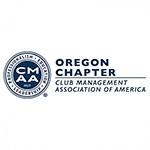Rule of the Month: It Is What It Is
By Sr. Rules Officials: Pete Scholz and Terry McEvilly
Click Here for the Rule of the Month Archive
Definitions
You have heard it before and you will probably hear it again, “The definitions and the corresponding interpretations in the Rules are the most important part of the entire book.” Throughout the Rules of Golf book, words that have particular definitions are in italics and without a good understanding of their definitions, the Rules can easily be misunderstood and misinterpreted.
For instance, when a player plays from a wrong place, Rule 14.7 will require the player to correct the error only if it is a serious breach of playing from a wrong place. So what exactly constitutes a serious breach of playing from a wrong place? Reading the definition of Serious Breach will provide the answer.
Test your knowledge of Definitions with the following questions and answers. Every correct answer can be found in the Definition section of the Rules.
Questions: True / False
- A ball may be replaced on the putting green by rolling it to the original spot with a club.
- Soft and muddy ground is considered an abnormal course condition and the player may take free relief.
- A provisional ball may be played in case the original ball is out of bounds or lost anywhere on the course.
- A player’s ball lies outside of a large area of ground under repair (GUR). A tree branch from a tree planted within the ground under repair extends beyond the lines defining the GUR. If the player has interference from any part of the branch, he or she may take free relief.
- A hole created by a worm is considered an animal hole and thus, an abnormal course condition from which free relief is allowed.
- An area of small trees has been declared a no play zone by the Committee. The area must also be defined as either a penalty area or an abnormal course condition.
- When the Rules refer to a ball at rest or a ball in motion, this means a ball that is in play. Therefore, an abandoned ball or an errant ball from the range is a movable obstruction.
- For a ball to be considered embedded it must be in its own pitch-mark made as a result of the previous stroke and part of the ball must be below the level of the ground.
- If a player finds his or her ball after a four minute search and plays it, he or she has played a wrong ball.
-
The nearest point of complete relief is the reference point for taking penalty relief where the ball last crossed the edge of a penalty area.
Answers:
- False. Definition of Replace and Interpretation Replace/1. This ball has not been replaced properly and if the player makes a stroke at the ball, he or she gets one penalty stroke. To replace a ball properly, it must be set down and let go of with the intent for it to be in play.
- False. Definitions of Abnormal Course Condition & Temporary Water. A correct answer may require you to search several definitions. Abnormal Course Conditions includes four defined terms; Animal Hole, Ground Under Repair, Immovable Obstruction and Temporary Water. The definition of Temporary Water specifically mentions that soft muddy ground is not considered an Abnormal Course Condition unless water remains present and visible either before or after the player takes his or her stance.
- False. Definition of Provisional Ball. If the player believes that the original ball is either out of bounds or lost on the course outside of a penalty area, a provisional ball may be played. A provision ball may not be played simply because the player believes the ball is lost inside of a penalty area.
- True. Definition of Ground Under Repair. According to the definition, any growing thing that is planted within an area of GUR is part of the GUR. This is true even if the growing thing (tree branch) extends above and beyond the edge of the defined area, but excludes roots.
- False. Definitions of Abnormal Course Condition, Animal, Animal Hole and Loose Impediments. This question illustrates how the definitions interweave with other definitions and the Rules. While it is true that a worm is an animal and that the Rules provide free relief from animal holes, any hole that is dug by an animal that also fits the definition of a loose impediment, such as a worm, is not considered an animal hole and free relief is not available.
- True. Definition of No Play Zone. Every no play zone must either be within a penalty area, which provides the player relief under a one stroke penalty or an abnormal course condition from which free relief is available. Additionally, the player may choose to proceed under the unplayable ball Rule but must not play the ball as it lies.
- True. Definition of In Play and Interpretation Movable Obstruction/1. While this seems rudimentary, it is important to understand that the Rules are only concerned with balls that are in play by definition. For instance, an abandoned ball left on the putting green is treated much differently than a ball in play if it is hit with another ball that has been played from the putting green. See Rule 11.1b Exception 2.
- True. Definition of Embedded Ball. This definition is repeated in Rule 16 almost word for word. Rule 16.3a describes not only when a ball is embedded but also the proper procedure for taking relief.
- True. Definitions of Wrong Ball and Lost. A wrong ball can include the player’s original ball when it is out of bounds, has become lost or has been lifted from the course and not put back into play. In the case presented, since the player’s ball was not found within the three minutes allowed for searching, it has become lost according to the definitions and thus a wrong ball.
- False. Definition of Nearest Point of Complete Relief and Interpretation Nearest Point of Complete Relief/1. The nearest point of complete relief is the reference point for taking free relief from an abnormal course condition, dangerous animal condition, wrong green or a no play zone. This point must be strictly interpreted. For example, a player is not allowed to choose what side of the cart path they wish to take relief. Instead, the nearest point of complete relief, as defined, must be determined and a ball dropped within one club-length of that spot but not nearer the hole and where there is no interference from the cart path.








